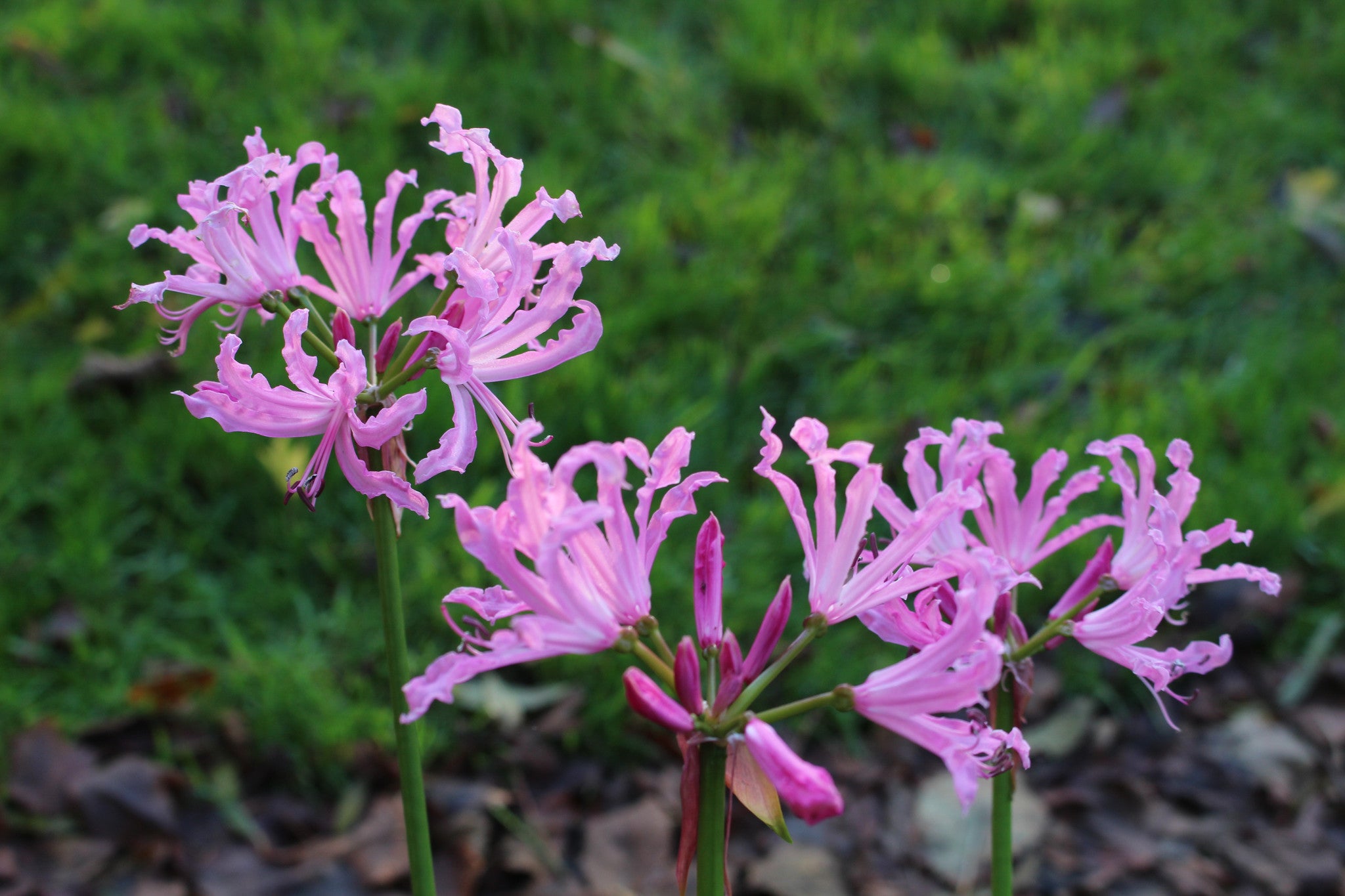Nerine 'Pink Triumph'
Approx. 0.5 litre pot
About this cultivar:
Nerine ’Pink Triumph’ is the same as Nerine bowdenii but a deeper pink. I guess 'Pink Triumph' sounds better than 'Deeper Pink Version'.....
- Position: Full sun, partial shade
- Soil: Almost any soil, grows well in Ballyrobert
- Flowers: September, November, December
- Other features: Royal Horticultural Society Award of Garden Merit (RHS AGM)
- Hardiness: Fully hardy, grows well in Ballyrobert
- Habit: Clump forming
- Foliage: Deciduous
- Height: 30 - 45 cm (1 - 1.5 ft)
- Spread: 15 - 25 cm (0.5 - 0.8 ft)
- Time to full growth: 2 to 5 years
- Plant type: Herbaceous Perennial, bulb
- Colour: Green, pink
- Goes well with: Colchicums and Cyclamens. Hakonechloa
About this genus:
Nerine (ne-re-ne) is a genus of flowering plants belonging to the Amaryllis family (Amaryllidaceae). Native to South Africa, there are about 30 species in the genus. Though described as lilies, they are not significantly related to the true lilies Lilium.
They were established by the cleric and Amaryllidaceae specialist William Herbert in 1820. The genus name derives from the Nereids (sea-nymphs) of Greek mythology that protected sailors and their ships. When Herbert chose the name of these nymphs for the first species of the genus, Nerine sarniensis, he alluded to the story of how this South African species arrived on the island of Guernsey in the English Channel. It is said that a ship carrying boxes of the bulbs of this species destined for the Netherlands was shipwrecked on Guernsey. The boxes of bulbs were washed up on the island and the bulbs became established and multiplied around the coast!
In late autumn most Nerine bear spherical umbels of lily-like flowers in shades from white through pink to crimson. They are bulbous perennials, some evergreen, associated with rocky and arid habitats. However we grow them almost everywhere in our damp clay soil in our garden at Ballyrobert. Classic companion are Colchicums and Cyclamens. Do try them contrasted with different foliage though (try Hakonechloa) - to bring a bit of summer into your late autumn/winter garden!


